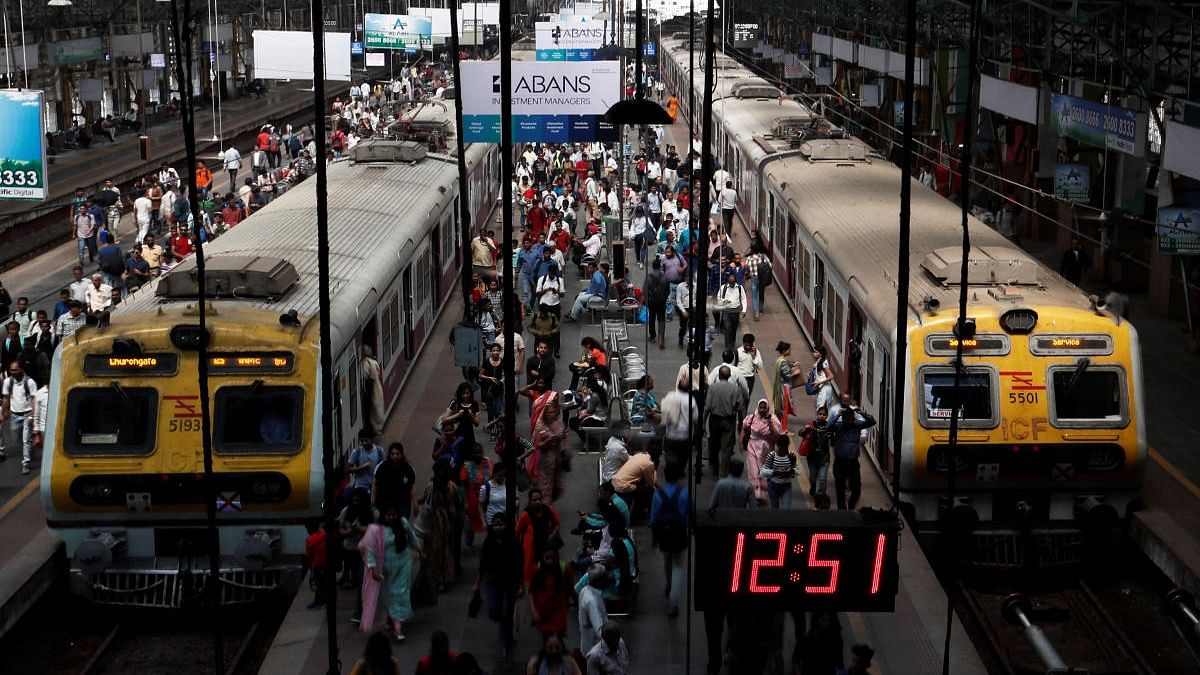
Representative image.
Credit: PTI Photo
Recent media reports hint at the potential introduction of a metro rail or light metro rail system in Kerala's capital, with official approval expected after the ongoing general elections.
Following Kochi's successful adoption of the metro rail, the long-standing demand for similar infrastructure in Thiruvananthapuram and Kozhikode, two other prominent cities in Kerala, has resurfaced after many years. There have been many feasibility studies on the viability and the type of public transport system that should be promoted in these cities. The learning from the Kochi Metro suggests creating an ecosystem comprising the commuting community, the feeders including buses and the share-autos, a common ticketing system, etc., to ensure that end-to-end commuting is smooth and sustainable.
Achieving this goal requires a departure from conventional practices and traditions within the city. This can be accomplished through route rationalisation of existing bus services, and integrating services provided by both the state transport corporation and private fleets with the metro stations and aligning their operations. Additionally, regulatory frameworks such as including permits for feeder services like share-autos in the Motor Vehicle Act need to be put in place. Equally important is the establishment of a metropolitan transport authority comprising transportation experts.
Will the proposed metro rail meet the needs of the region? Thiruvananthapuram's scenario has changed a lot in the last few years. The proposed metro route from Kazhakootam to Karamana will be a single alignment to start with. As in Kochi, this will cut through the city, and it is expected that a facilitating ecosystem, as previously outlined, will emerge as the service starts its operations to ensure footfall in the metro.
Thiruvananthapuram is a fast-urbanising region. The city itself has an estimated population of 1,053,000, while the metropolitan area is projected to have a population of 2,384,000 in 2024. Technopark, which employs 60,000 people, is the first of its kind in India set up in the 1990s. Thiruvananthapuram is flanked by the adjacent district of Kollam, which is a fast-urbanising area as per the Economic Intelligence Unit report. The capital city is also connected to the Kanyakumari district of erstwhile Travancore state, with its headquarters in Nagercoil.
This area, located at the southern tip of peninsular India, has significant potential for development as a coastal economic zone. The proximity to major towns within a two-hour travel distance enhances this potential. Despite being underdeveloped, the region benefits from an extensive natural coastline and offers opportunities to develop an industrial belt leveraging maritime trade routes and infrastructure advancements.
Thiruvananthapuram city boasts three major railway stations: Thampanoor, Kochu Veli, and the proposed Nemam terminal. Efforts to expand the railway track between Thiruvananthapuram and Nagercoil are currently underway. Additionally, there's a concerted push for additional stations like Nedumganad, highlighting the need for expanded rail infrastructure.
The inauguration of the Vizhinjam International Container Port has opened a vital gateway on the southern tip of the continent, with ongoing efforts by the Adani Group to establish railway connectivity from Thiruvananthapuram to Vizhinjam for cargo transport. Additionally, there have been proposals to develop the Kulachal port to complement and support operations at Vizhinjam. These developments are expected to drive significant economic growth in the region.
The ongoing renovations and upgrades at the Thiruvananthapuram International Airport, coupled with the presence of the Technopark and Vizhinjam port, create a fertile environment for regional and industrial development. This growth trajectory has the potential to generate thousands of job opportunities and attract substantial investments, positioning the region as a major economic hub.
Focusing solely on the Thiruvananthapuram Metro development overlooks the significant potential for industrial growth. A better approach is for a suburban rail system connecting Thiruvananthapuram and Nagercoil, fostering inter-state development.
With the ongoing widening of NH-66 further enhancing connectivity, integrating a regional suburban railway network with these highways could transform the region into a thriving coastal industrial hub, providing seamless access to a seaport and airport. This integrated approach, coupled with upgraded industrial infrastructure, can transform the region into a thriving industrial hub, leveraging its strategic location and robust transportation network for regional economic growth.
The potential of building a suburban railway network surpasses that of metro systems, offering a broader opportunity for integration and connectivity. The Indian Railways has historically played a pivotal role in uniting the nation, and this legacy can continue to be harnessed. The two states can establish a regional suburban railway corporation under the provisions of the Railway Act of 1989 to explore joint ventures between the Union and state governments, specifically focusing on building a suburban railway network in the region.
Interstate regional development can take place in India if there is a political will. Hosur's rise as an industrial hub, only 35 kilometres away from Bengaluru, is a prime example that showcases the mutual benefits of interstate co-operation and collaborative efforts between states for shared prosperity.
(D Dhanuraj is Chairman, and Nissy Solomon is Senior Research Associate, the Centre for Public Policy Research, Kochi.)
Disclaimer: The views expressed above are the author's own. They do not necessarily reflect the views of DH.